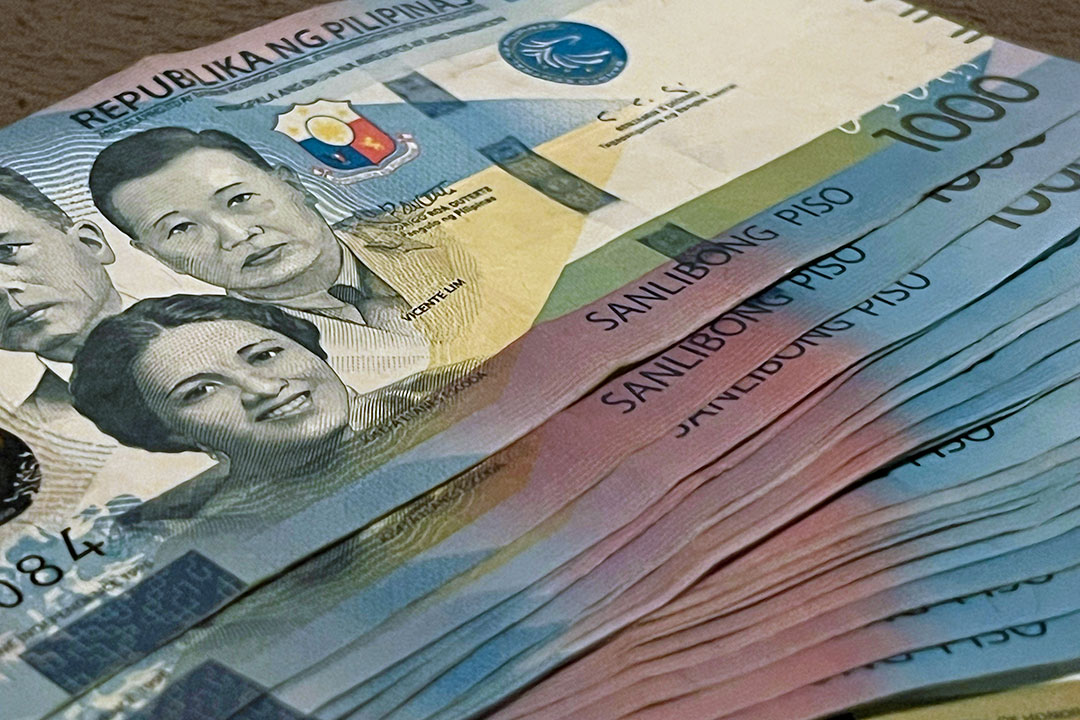Peso may move sideways as markets digest key US economic data, tariffs

THE PESO could continue to move sideways against the dollar this week as the market digests key US economic data released over the weekend, which could affect the US Federal Reserve’s policy path moving forward.
On Friday, the local unit closed at P57.995 per dollar, weakening by 8.5 centavos from its P57.91 finish on Thursday, Bankers Association of the Philippines data showed.
Week on week, the peso also declined by three centavos from its P57.94-per-dollar finish on Feb. 21.
“The dollar-peso traded lower after US President Donald J. Trump said the tariffs on Canada and Mexico will take effect next week, and an additional 10% tariffs on China,” a trader said in a phone interview on Friday.
Rizal Commercial Banking Corp. Chief Economist Michael L. Ricafort said in a Viber message that Mr. Trump’s comments caused safe-haven demand for the greenback on Friday.
Investors unnerved by the prospect of Mr. Trump’s impending tariffs drove a wave of selling on Friday that hit risk-sensitive currencies such as the Australian dollar and sent bitcoin tumbling, thereby boosting the dollar in the Asian session, Reuters reported.
On Thursday, Mr. Trump said his proposed tariffs of 25% on Mexican and Canadian goods would take effect on March 4, along with an extra 10% duty on Chinese imports, defying expectations of those who hoped for a further delay in the levies.
For this week, the trader said the peso’s movement would depend on US core personal consumption expenditures (PCE), personal income, and consumer spending data, which were released after the Asian trading session on Friday.
The trader sees the peso moving between P57.70 and P58.20 per dollar this week, while Mr. Ricafort expects it to range from P57.75 to P58.15.
In the US session, the US dollar edged lower on Friday following two straight days of gains, after a reading on inflation was largely as anticipated by investors while consumer spending unexpectedly fell, Reuters reported.
The PCE price index increased 0.3% in January, in line with expectations of economists polled by Reuters, after advancing by an unrevised 0.3% in December. In the 12 months through January, prices rose 2.5% after increasing 2.6% in December.
The Fed tracks the PCE price measures for its 2% inflation target. The US central bank paused rate cuts in January, leaving its benchmark overnight interest rate in the 4.25%-4.5% range, having reduced it by 100 basis points since September, when it started its easing cycle.
But consumer spending, which accounts for more than two-thirds of US economic activity, dropped 0.2% in January after an upwardly revised 0.8% increase in December.
The dollar index, which measures the greenback against a basket of currencies including the yen and the euro, fell 0.1% to 107.25, with the euro up 0.18% at $1.0416.
For the week, the dollar was up about 0.5% but down more than 1% for February, poised for its largest monthly decline since August.
Expectations the Federal Reserve will cut rates by at least 25 basis points (bps) at its June meeting edged up after the data, with markets pricing in a 71.4% chance of a cut, up from nearly 70% in the prior sessions, according to CME’s FedWatch Tool.
Fed officials have recently indicated they expect the central bank to hold rates steady until there is more clarity surrounding the impact of tariffs on inflation and a slowing economy.
Minutes of the US central bank’s Jan. 28-29 policy meeting showed officials were worried about higher inflation from Mr. Trump’s initial policy proposals. The policy rate was hiked by 5.25 percentage points in 2022 and 2023 to quell inflation.
The greenback had fallen earlier last week by nearly 4% from a more than two-year high in January on renewed worries about US economic growth and inflation as Mr. Trump shifted tariff deadlines on Canada and Mexico.
Investors are also bracing for the labor market impact from actions by the Department of Government Efficiency under Elon Musk.
Against the Japanese yen, the dollar strengthened 0.65% to 150.77 but has fallen nearly 3% for February as investors largely expect the Bank of Japan to hike interest rates this year. — AMCS with Reuters



